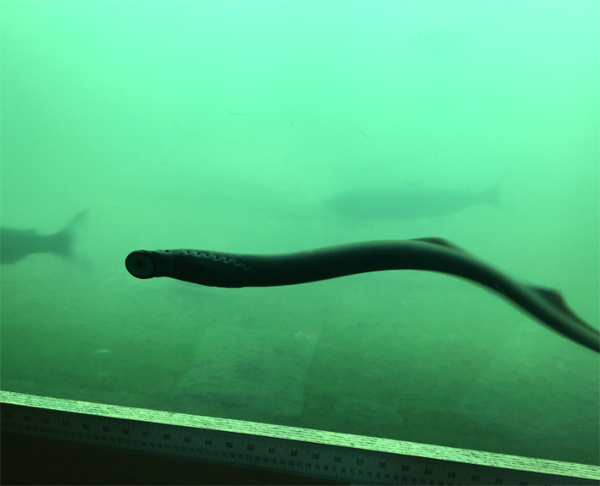People ask many questions about Bonneville Dam fish count. So, here we are going to discuss more about Bonneville Dam fish counts. But before discussing more about Bonneville Dam fish count, let us discuss something more about the Bonneville Dam.
The Bonneville Dam fish count is an annual event that takes place on the Columbia River in the Pacific Northwest region of the United States. It is a vital tool used by fishery managers to track the health and abundance of fish populations in the river.
The count has been conducted since the 1930s, and it provides valuable information about the status of salmon, steelhead, sturgeon, and other fish species in the Columbia River Basin.
The Bonneville Dam fish count is conducted by the U.S. Army Corps of Engineers, and it typically runs from mid-March to mid-November each year.
During this time, biologists stationed at the dam use a fish ladder to observe and count each fish that passes through. The fish ladder is a series of interconnected pools and channels that allows fish to swim around the dam and continue their migration.
The fish count is an important tool for fisheries management because it provides information about fish populations and migration patterns. This information is used by managers to set fishing regulations, make decisions about habitat restoration, and monitor the health of fish populations over time.
The most commonly counted fish species at Bonneville Dam are salmon and steelhead. These fish are important to the Pacific Northwest region because they support commercial and recreational fishing industries, and they are also a vital food source for other wildlife in the area. Other fish species that pass through the dam include shad, lamprey, and sturgeon.
The Bonneville Dam fish count is conducted using several different methods. One method involves biologists stationed at the fish ladder physically counting each fish that passes through.
This method is time-consuming and labor-intensive, but it provides the most accurate count of fish populations. Another method involves using cameras to record the fish as they pass through the fish ladder. This method is less labor-intensive, but it may not provide as accurate a count as the physical counting method.
The data collected from the Bonneville Dam fish count is used to monitor the health and abundance of fish populations over time. It helps managers identify trends and potential issues that may need to be addressed, such as declining fish populations or habitat degradation. This information is used to make informed decisions about how to manage the fisheries in the Columbia River Basin.
One of the main goals of the Bonneville Dam fish count is to ensure the long-term sustainability of fish populations in the Columbia River Basin. By monitoring fish populations and migration patterns, managers can make informed decisions about how to manage fisheries in a sustainable way.
This includes setting fishing regulations that protect fish populations, and implementing habitat restoration projects that help restore degraded fish habitats.
In addition to providing valuable information about fish populations, the Bonneville Dam fish count is also an important educational tool. The U.S. Army Corps of Engineers offers tours of the fish ladder to visitors, where they can learn about the different fish species that pass through the dam and the importance of the fish count for fisheries management.
The Bonneville Dam fish count is a vital tool for monitoring the health and abundance of fish populations in the Columbia River Basin. It provides valuable information about salmon, steelhead, sturgeon, and other fish species that support commercial and recreational fishing industries, and it helps ensure the long-term sustainability of these important resources.
By continuing to conduct the fish count each year and using the data collected to inform fisheries management decisions, we can help protect and preserve these vital fish populations for future generations to enjoy.

History of Bonneville Dam
The Cascade Locks and Canal were constructed in 1896, prior to this damming of the river. And this damming allowed ships to pass the Cascades Rapids which is located several miles upstream of Bonneville.
Development of the Columbia River to provide flood control, hydroelectricity, navigation, and irrigation was deemed to be important, prior to the New Deal. The US Army Corps of Engineers published the Columbia River 308 Report that recommended ten dams on the river, but no action was taken until the Franklin D. Roosevelt administration and the New Deal in 1929.
America was in the Great Depression, and the dam’s construction provided jobs and other economic benefits to the Pacific Northwest, during this period.
The Army Corps of Engineers first built one of the largest scale models in history of the proposed dam, to create the Bonneville Dam and Lock (the section of river on which it was to be located, and its various components to aid in the study of the construction).
Bonneville Dam Fish Count
The Bonneville Fish Hatchery is the largest fish hatchery in Oregon, which is located next to Bonneville Dam. It is a tourist destination that is often connected to Bonneville Dam tourism.
Bonneville Dam fish count is not as high as it was previously. The Dam blocked the migration of white sturgeon to their upstream spawning areas.
Although, sturgeon still spawn in the area below the dam. And the lower Columbia River supports a healthy population of the sturgeon. A very small and very depressed populations of the white sturgeon persist in the various reservoirs upstream.
The Bonneville features fish ladders to cope with fish migration problems. Fish ladders help native salmon and steelhead get past the dam on their journey upstream to spawn.
The large concentrations of fish swimming upstream serve as a tourist attraction during the spawning season. The California sea lions are often seen around the base of the dam during the spawning season. The sea lions are attracted to large number of fish.
And growing population of these sea lions by 2006 and their impact on the salmon population had become worrisome to the Army Corps of Engineers and environmentalists.

Historically, pinnipeds such as sea lions and seals have hunted salmon in the Columbia River as far as The Dalles and Celilo Falls, 60 miles (97 km) farther upstream from Bonneville, as remarked upon by people such as George Simpson in 1841. And it impacted Bonneville Dam fish count.






